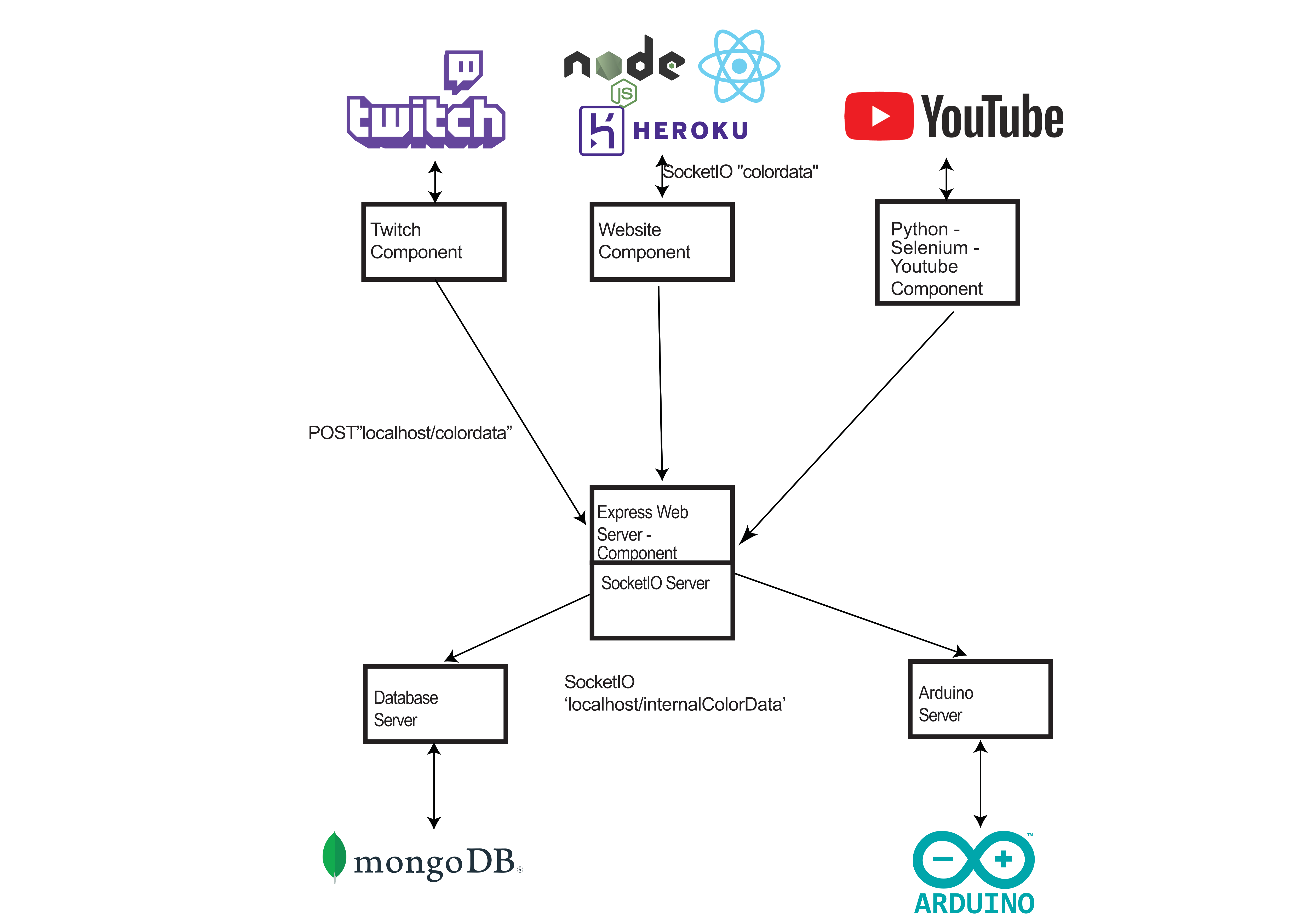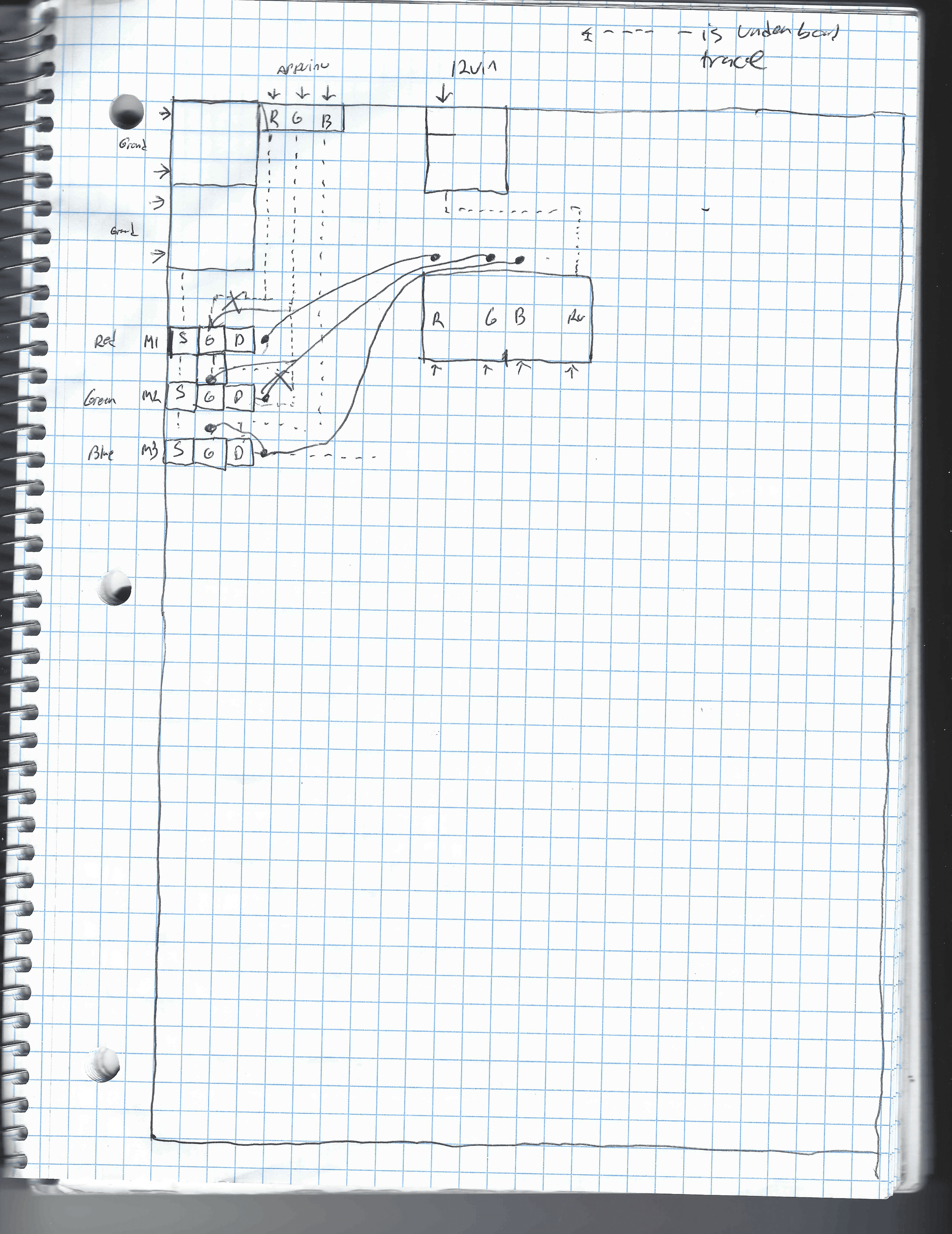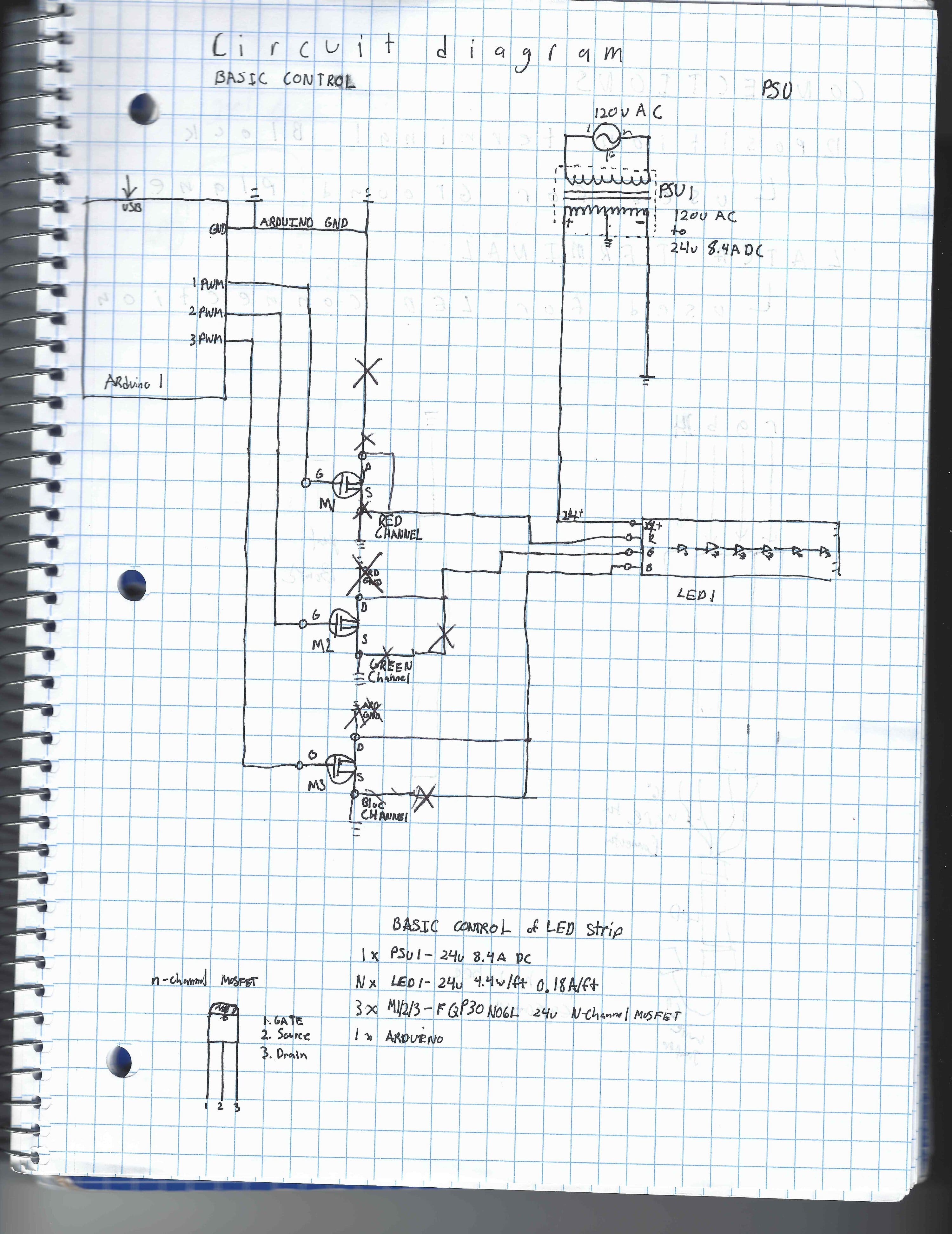After I had the Youtube/Twitch/MongoDB components working, I moved onto sending the data to my Arduino Uno via Serial. This was accomplished using the NodeJS Serial library. Initially I was sending a hex string, then validating on the Arduino, splitting it into RGB values and then setting the data. This caused a lot of issues though, first it was slow, second it caused the arduino to run out of memory if too many messages were sent at once ( I didn’t find this out until I could test with the leds).
Architecture Status:

Building the circuit board:
To control analogue RGB lights, I based my circuit on this circuit guide by Adafruit. However, because I was dealing with 24v LEDs, I needed a mosfet that could handle it. I sourced the parts from 3 places: Arrow, Sparkfun, and Amazon. The power supply I used is a MEAN WELL LRS-350-24 350.4W 24V 14.6 Amp PSU. After breadboarding the circuit and confirming it works I drew out what I wanted the final circuit board design to be. From there, I built it. I used terminal blocks for the ground wires and LED connections. Because I was using perfboard, I had to create my own solder traces by connecting each hole individually with solder.
Fast – forward video of soldering the circuit:
Circuit drawing on paper:

Circuit schematic:

 Edward C. Deaver, IV
Edward C. Deaver, IV
Discussions
Become a Hackaday.io Member
Create an account to leave a comment. Already have an account? Log In.